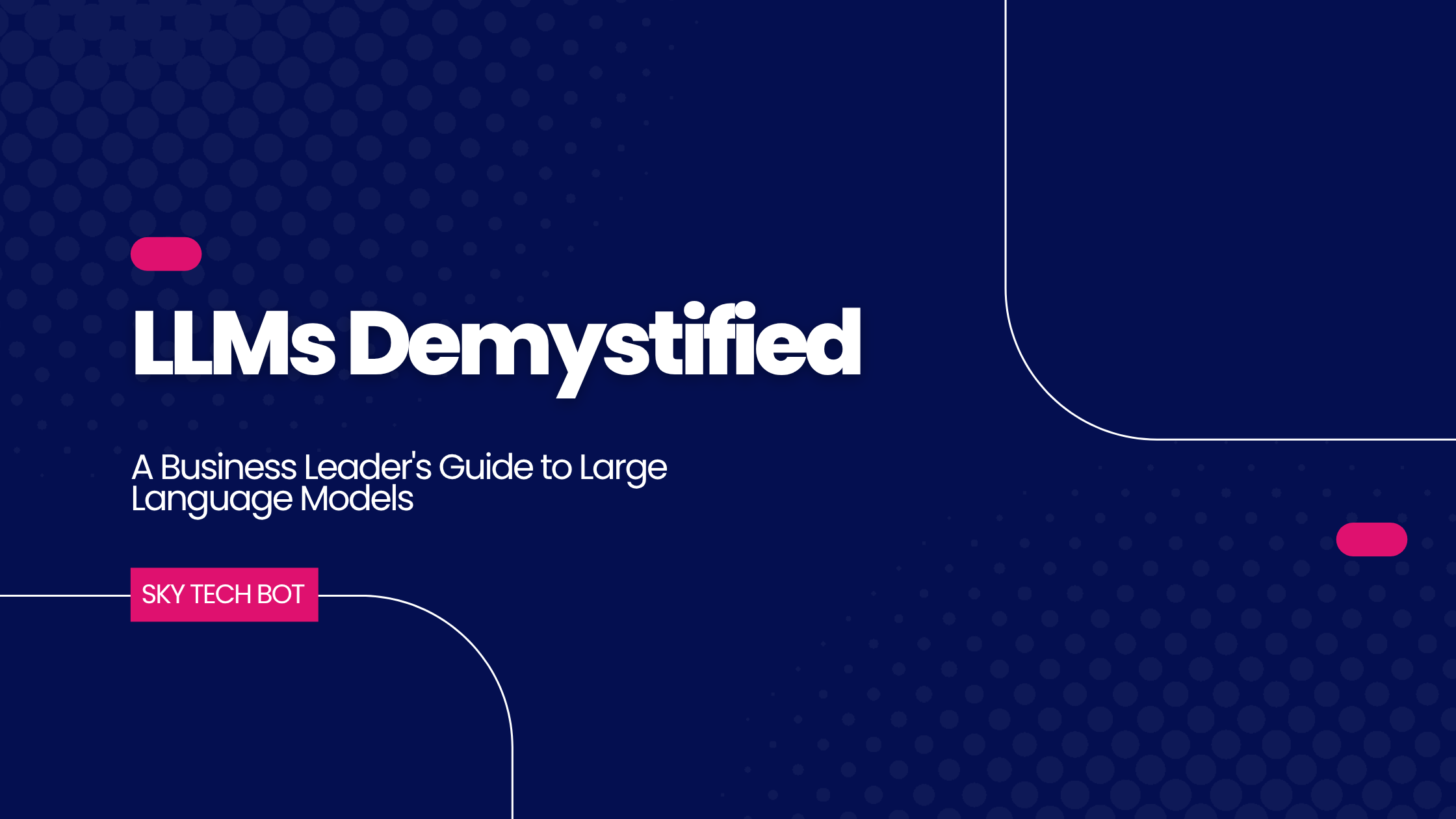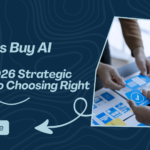You’ve heard the terms: Large Language Models, LLMs, ChatGPT, Generative AI. They’re dominating tech news and boardroom conversations. But beyond the hype and technical jargon, what are they really? And more importantly, what can they actually do for your business?
This guide cuts through the noise. We’ll explain LLMs in plain English, focusing on what every business leader needs to know to make smart, strategic decisions.
What is an LLM, Really? (The Simple Analogy)
Think of a Large Language Model (LLM) as the world’s most intern, trained on a vast portion of the internet. It has read millions of books, articles, websites, and reports.
But here’s the crucial part: It doesn’t “understand” or “know” facts. Instead, it has learned patterns, structures, and relationships between words. When you ask it a question, it’s statistically predicting the most likely sequence of words that would form a coherent answer based on all that training data.
It’s not a database of truth; it’s a pattern-matching engine for language.
The Core Components of an LLM: Breaking It Down
Let’s demystify the technology into three business-friendly concepts:
- The Training Data: This is the “textbook” the model learned from. Its quality and breadth determine the model’s knowledge and biases. A model trained on scientific journals will behave differently than one trained on social media.
- The Neural Network: This is the model’s “brain”—a complex, multi-layered system that finds and remembers the patterns in the data. The “Large” in LLM refers to the billions of parameters (connections) in this network.
- The Prompt (Your Input): This is your instruction or question. The quality of your prompt directly controls the quality of the output. Garbage in, garbage out.
From General Tool to Business Solution: The Power of Customization
Public models like ChatGPT are fantastic generalists. But their real business power is unlocked through customization. Here’s how:
- Prompt Engineering: Crafting specific instructions to get the desired output for a task (e.g., “Write a product description in the tone of Apple’s marketing”).
- Retrieval-Augmented Generation (RAG): This is a game-changer. RAG connects the LLM to your own business data (your documents, databases, manuals). The model uses this private information to generate accurate, relevant answers. It grounds the AI in your truth.
- Fine-Tuning: Further training a general model on your specific data to make it an expert in your domain (e.g., fine-tuning on legal contracts to create a specialized legal assistant).
Practical Business Applications: Where LLMs Deliver Real Value
Stop thinking of LLMs as just a chat interface. Think of them as an engine for automation and enhancement.
- Supercharged Customer Service: Build chatbots that answer complex queries by pulling from your knowledge base, reducing ticket volume and wait times.
- Intelligent Content Creation: Draft marketing copy, blog posts, social media content, and internal reports in minutes, not hours.
- Knowledge Management: Create a single source of truth. Employees can ask questions like “What was our Q3 sales strategy for the European market?” and get an instant answer drawn from all your internal documents.
- Data Analysis & Summarization: Feed the model lengthy reports, transcripts, or customer feedback, and get concise summaries and key takeaways.
What to Be Aware Of: The Leader’s Checklist
LLMs are powerful, but not perfect. A smart leader is aware of the limitations:
- Hallucinations: LLMs can confidently generate plausible-sounding but incorrect or fabricated information. Fact-checking is essential.
- Data Privacy & Security: Never input sensitive, proprietary, or customer data into a public, unsecured model.
- Bias: Models can reflect and amplify biases present in their training data.
- Cost & Complexity: Customizing and deploying your own secure LLM solution requires expertise.
The Bottom Line for Your Business
Large Language Models are not a magic bullet, but they are a transformative technology. They are a tool for augmenting human intelligence and automating language-based tasks at a scale never before possible.
The goal isn’t to replace your team, but to empower them to focus on high-value, strategic work by offloading the repetitive, time-consuming tasks to a capable AI.
The question is no longer if you should explore LLMs, but how you can implement them securely and effectively to gain a competitive edge.
Need a custom LLM solution for your business data? Let’s cut through the hype together and build a strategy that works for you. Schedule a Free AI Consultation with our experts today.


